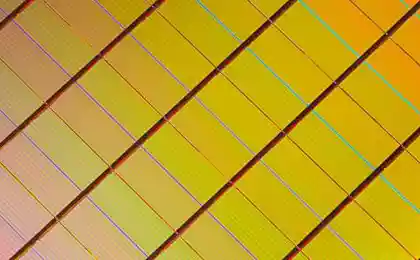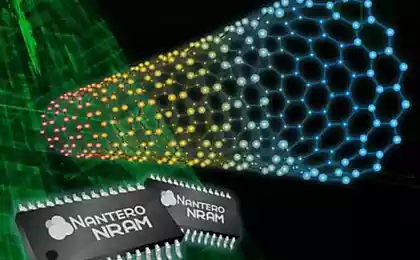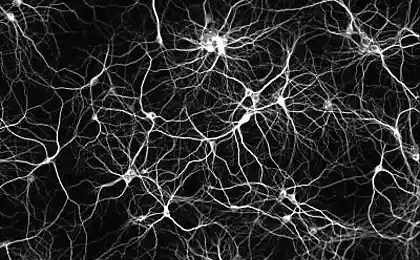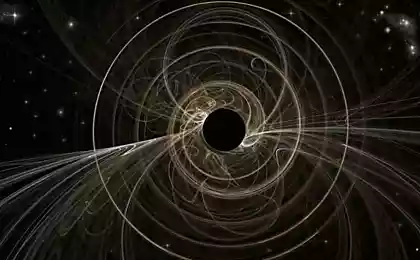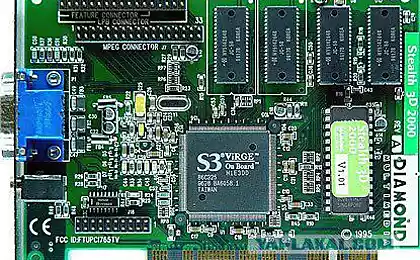481
Russian physicists received the material for the nonvolatile memory of a new type
Scientists from the MIPT was first grown ultrathin (2.5 nm) ferroelectric film on the oxide of hafnium, which can be the basis for elements of non-volatile memory.Obtained by scientists of ultrathin ferroelectric films can serve as the basis for elements of the non-volatile memory.

"Because of the structure of this material is compatible with silicon technology, we can expect that in the near future directly on silicon can be created a new device non-volatile memory using a ferroelectric polycrystalline oxide layers of hafnium", — quotes the press-service of the word lead author of the study, head of the laboratory of functional materials and devices for nanoelectronics MIPT, Andrei Zenkevich.
Why you need a non-volatile memory
Now the amount of stored and processed information in the world doubles every 1.5 years. To work with it needs more computer memory, especially a non-volatile — that is, one that stores information even after power outage. The ideal would be a "universal" memory that has the speed of RAM, capacity of hard disk and targetability stick. One of the most promising approaches for creation of such technology is considered non-volatile memory for ferroelectric tunnel junctions.
How does the ferroelectric tunnel junction
The ferroelectric is a substance able to "remember" the direction of the applied external electric field. In principle, they do not conduct electricity, but at very small thickness of the ferroelectric layer, the electrons with a certain probability it is still possible to pass through it, due to the tunneling effect has a quantum nature. Thus, the recording of information in memory based on ferroelectric films is produced by application of a voltage to the electrodes adjacent to the ultrathin ferroelectric, and reading — a measurement of the tunneling current.
Theoretically, this memory can possess extremely high density, speed of record and reading, and low power consumption. It can become a volatile modern alternative to dynamic RAM, where data can be stored without overwriting, only about 0.1 seconds. However, until now, all fabricated prototype devices based on the ferroelectric material was incompatible with the silicon technology used for the production of most modern circuits.
New development scientists
A team of researchers from MIPT, with the participation of colleagues from the University of Nebraska (USA) and University of Lausanne (Switzerland), for the first time experimentally demonstrated that the fused polycrystalline films of oxides of hafnium and zirconium with a thickness of only 2.5 nm possess the desired ferroelectric properties.

The oxide of hafnium is already used in the production of modern silicon logic chips, and a few years ago in one of its modifications was discovered ferroelectric properties. The merit of scientists from MIPT is that they managed to grow thin, tunnel-transparent film of this substance on a silicon substrate, while retaining its ferroelectric properties. To obtain such a film used a technique which is widely used in the production of modern microprocessors. Now scientists say about creation on the basis of a new material a non-volatile computer memory. published
Source: energosmi.ru/archives/16274

"Because of the structure of this material is compatible with silicon technology, we can expect that in the near future directly on silicon can be created a new device non-volatile memory using a ferroelectric polycrystalline oxide layers of hafnium", — quotes the press-service of the word lead author of the study, head of the laboratory of functional materials and devices for nanoelectronics MIPT, Andrei Zenkevich.
Why you need a non-volatile memory
Now the amount of stored and processed information in the world doubles every 1.5 years. To work with it needs more computer memory, especially a non-volatile — that is, one that stores information even after power outage. The ideal would be a "universal" memory that has the speed of RAM, capacity of hard disk and targetability stick. One of the most promising approaches for creation of such technology is considered non-volatile memory for ferroelectric tunnel junctions.
How does the ferroelectric tunnel junction
The ferroelectric is a substance able to "remember" the direction of the applied external electric field. In principle, they do not conduct electricity, but at very small thickness of the ferroelectric layer, the electrons with a certain probability it is still possible to pass through it, due to the tunneling effect has a quantum nature. Thus, the recording of information in memory based on ferroelectric films is produced by application of a voltage to the electrodes adjacent to the ultrathin ferroelectric, and reading — a measurement of the tunneling current.
Theoretically, this memory can possess extremely high density, speed of record and reading, and low power consumption. It can become a volatile modern alternative to dynamic RAM, where data can be stored without overwriting, only about 0.1 seconds. However, until now, all fabricated prototype devices based on the ferroelectric material was incompatible with the silicon technology used for the production of most modern circuits.
New development scientists
A team of researchers from MIPT, with the participation of colleagues from the University of Nebraska (USA) and University of Lausanne (Switzerland), for the first time experimentally demonstrated that the fused polycrystalline films of oxides of hafnium and zirconium with a thickness of only 2.5 nm possess the desired ferroelectric properties.

The oxide of hafnium is already used in the production of modern silicon logic chips, and a few years ago in one of its modifications was discovered ferroelectric properties. The merit of scientists from MIPT is that they managed to grow thin, tunnel-transparent film of this substance on a silicon substrate, while retaining its ferroelectric properties. To obtain such a film used a technique which is widely used in the production of modern microprocessors. Now scientists say about creation on the basis of a new material a non-volatile computer memory. published
Source: energosmi.ru/archives/16274
What is a healthy person, who is OK to control the level of insulin in the blood?
9 phases of the day, when the brain best absorbs information


